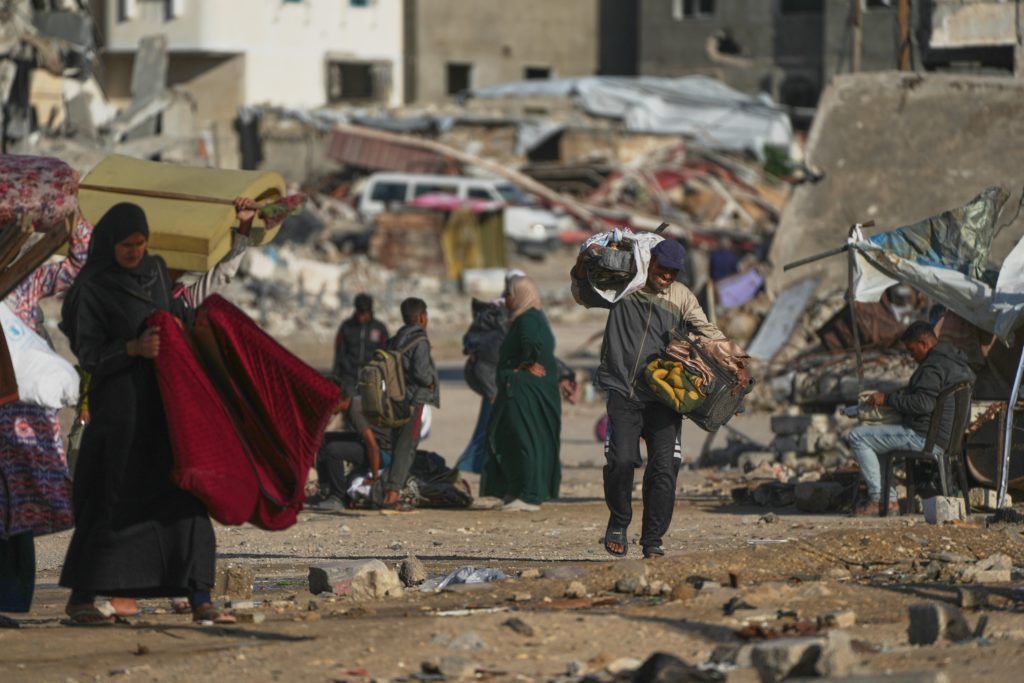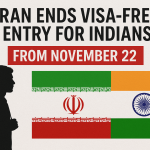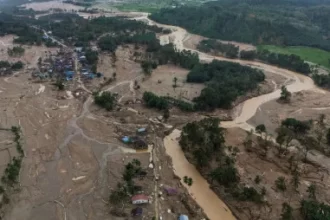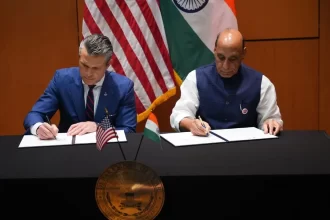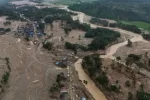In a landmark decision that may reshape the future of Gaza, the UN Security Council on Monday approved a US-led plan authorizing an international stabilization force to secure the war-torn territory. The resolution also leaves room — cautiously, conditionally — for a long-elusive vision: the possibility of an independent Palestinian state.
The vote passed 13-0, with China and Russia abstaining but notably choosing not to block the measure. For many inside the UN chamber, that alone was a signal — a moment where global powers, strained by disagreements, still recognized that Gaza cannot endure more paralysis.
For nearly two years, Gaza has lived in the shadow of relentless conflict following the October 7, 2023 Hamas attack that killed about 1,200 Israelis. Israel’s military response has left over 69,000 Palestinians dead, according to Gaza health officials, most of them women and children. Entire neighbourhoods have been flattened. Families have been separated, displaced, erased. And the world has watched a humanitarian catastrophe unfold in slow motion.
Now, the international community is trying — once again — to draw a line between the past and what comes next.
A New Framework, and a Contentious Path Forward
The US proposal endorses President Donald Trump’s 20-point ceasefire plan, which includes creating a temporary “Board of Peace,” headed by Trump, to oversee Gaza’s transition. The stabilization force will have a broad mandate: securing borders, demilitarizing the territory, and laying the groundwork for rebuilding.
The authority of both the board and the force is set to expire at the end of 2027.
Key to gaining support, especially from Arab and Muslim nations, was an upgrade to the language around Palestinian self-determination. After intense negotiations, the US agreed to more explicit wording: once the Palestinian Authority reforms and Gaza’s reconstruction advances, conditions “may finally be in place for a credible pathway to Palestinian self-determination and statehood.”
The plan also commits the United States to establishing dialogue between Israelis and Palestinians — a promise that has often been made but rarely sustained.
But not all parties welcomed the revised language. Israeli Prime Minister Benjamin Netanyahu quickly rejected any notion of Palestinian statehood, accusing the plan of rewarding Hamas and putting Israel’s future at risk. His refusal underscores a deep reality: even as world leaders attempt to shape Gaza’s future, political fractures run deep.
Arab and Muslim Nations Held the Key
Support from countries such as Qatar, Egypt, UAE, Saudi Arabia, Jordan, Turkey, Pakistan, and Indonesia helped push the resolution across the finish line. Many of these nations have expressed willingness to contribute troops — but only with official UN authorization.
Their joint statement urging “swift adoption” of the proposal signaled not only diplomatic alignment but a collective recognition that Gaza’s fragile ceasefire can collapse without an international security framework.
Russia’s Competing Proposal
Just days earlier, Russia introduced a competing resolution calling for stronger guarantees toward Palestinian statehood and for Gaza and the West Bank to be unified under the Palestinian Authority.
It removed references to the transitional board — a clear rejection of Washington’s preferred structure — and asked the UN Secretary-General for alternative peacekeeping options. But without broader support, Russia’s plan could not challenge the momentum behind the US draft.
What the Stabilisation Force Will Actually Do
Under the approved resolution, the force will be empowered to:
-
Oversee the demilitarization of Gaza
-
Ensure weapons from non-state armed groups are permanently decommissioned
-
Use all necessary measures (UN language for military force if required)
-
Secure border zones alongside trained and vetted Palestinian police
-
Facilitate the continuous flow of humanitarian aid
-
Coordinate closely with Egypt and Israel to prevent destabilizing disruptions
As stability gradually returns, Israeli forces will withdraw based on a mutually agreed framework tied to milestones in demilitarization — a process that will require cooperation between the stabilization force, Israel, the US, and ceasefire guarantors.
At Its Core: Human Lives
Behind every resolution, every negotiation, every abstention or vote, lie the lives of real people — families who have lost homes, children forced to grow up in rubble, parents who have buried their sons and daughters, communities waiting for safety, normalcy, a future.
This decision does not promise a perfect solution. But for millions who have endured years of darkness, it may be the first flicker of light in a very long time.
Peace will not be built in conference rooms alone. It must be felt in the streets of Gaza, in the voices of its children, and in the courage of its people who continue to hope despite everything.
And hope, fragile as it is, deserves every chance to breathe again.
